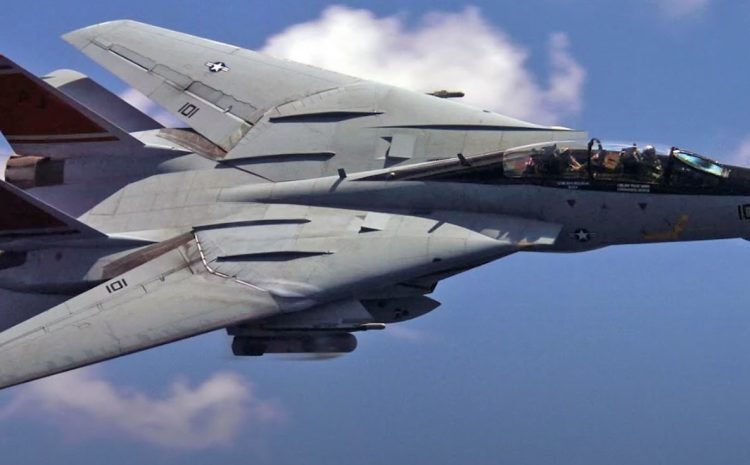The F-14 Fighter Jet: Its History and Current Use

Immerse yourself in the fascinating tale of the F-14 fighter jet, exploring its pivotal role in US naval history, and its transition to the modern era. This comprehensive article will guide you through its intricate history, highlighting its design features, its debut, its retirement, and its intriguing, ongoing service.
Is the F-14 Fighter Jet Still in Operation?
The F-14 fighter jet was a key weapon in the arsenal of the United States naval fleet. This pivotal multirole fighter was officially retired by the U.S. in 2006, yet its story did not end there, and it continues to serve to this day.
- The F-14 is an advanced, high-speed, twin-engine fighter with a variable-sweep wing, designed by the esteemed Grumman Corporation. It held the prestigious position as the leading strike aircraft in the U.S. Navy’s fleet until its official retirement;
- Despite its retirement in the U.S., the F-14 continues to be operational in a more secluded and contentious region of the globe.
In this comprehensive analysis, we will delve deeper into the saga of the F-14, its current state of service, its locations, and the history that surrounds it.

Unveiling the Grumman F-14 Fighter Jet
The Grumman F-14 is a dual-engine, tandem-seat warplane engineered for the US naval forces. This maritime beast boasts carrier deployment capabilities and sports a distinctive variable-sweep wing design. When the aircraft soars at high velocities, its onboard computer systems retract the wings to minimize drag, while at slower speeds, the wings are pushed forward.
The Grumman F-14 was conceived to supersede the McDonnell Douglas F-4 Phantom II, a decision driven by combat lessons learned during the Vietnam War. The F-4 Phantom II exhibited a critical lack of agility which significantly influenced aerial combat outcomes in Vietnam, resulting in Grumman securing the contract in January 1969.
The maiden flight of the Tomcat occurred on December 21, 1970, with it formally entering service in 1974. By the time production ceased in 1991, Grumman had constructed 712 F-14 units.
Is the F-14 Fighter Jet Still Part of the US Arsenal?
The F-14 is no longer part of the United States arsenal. The aircraft was officially retired on September 22, 2006, making way for its successor, the Boeing F/A-18E/F Super Hornet. Throughout its tenure, the F-14 performed the roles of air superiority fighter, fleet defense interceptor, and reconnaissance aircraft for the Navy.
- Despite its formal retirement from the United States Navy, the F-14 continues to be utilized. Its legacy persists within the air forces of Iran;
- The U.S., under the Pahlavi dynasty, exported the F-14 to Iran back in 1976. In the early 1970s, Iran’s Air Force was on a quest for a new fighter capable of intercepting Soviet MiGs during reconnaissance missions;
- In January 1974, Iran placed an order for 30 F-14s in a deal worth an estimated 300 million dollars. Shortly thereafter, Iran revised their order to include a total of 80 aircraft. The updated agreement also comprised spare parts, replacement engines for a decade, armament bundles, and aircraft support. Iran received its first batch of F-14s in the early part of 1976;
- Post the Iranian Revolution of 1979, most of the Western arms orders were nullified by the revolutionary government. However, Iran attempted to procure spare parts for the F-14 after its retirement from the United States Navy in 2006. However, in 2007, the U.S. Department of Defense put a stop to all sales of F-14 spare parts owing to fears of them ending up in Iran. To further restrict Iran’s access to spare parts, the Pentagon announced plans to obliterate the remaining U.S. F-14s in July 2007.
The exact number of operational F-14s within Iran’s possession is currently indeterminate.
Conclusion
The F-14 fighter jet was an integral component of the United States Navy, playing the roles of an air superiority fighter, a fleet defense interceptor, and a reconnaissance aircraft. It was officially retired on September 22, 2006, with the Boeing F/A-18E/F Super Hornet succeeding it.
Despite its retirement from the United States Navy, the F-14 persists within the Iranian Air Force. Iran procured the F-14 in the 1970s, but following the Iranian Revolution in 1979, the new regime ceased all arms purchases.
At present, the U.S. bars Iran from acquiring spare parts, and most of the remaining F-14s have been destroyed to enforce this restriction. The exact count of operational F-14s within Iran’s arsenal remains uncertain.